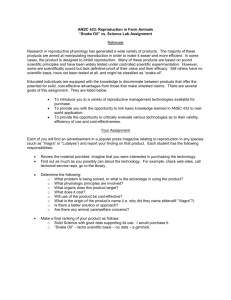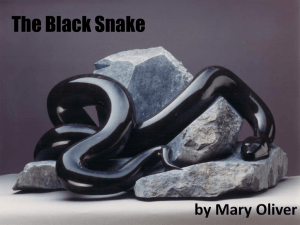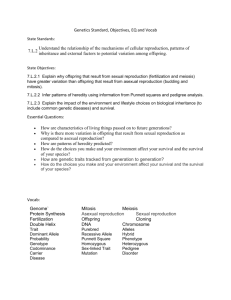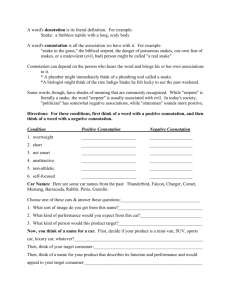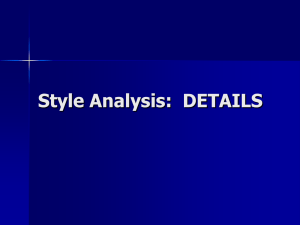January Life Science Homework
advertisement
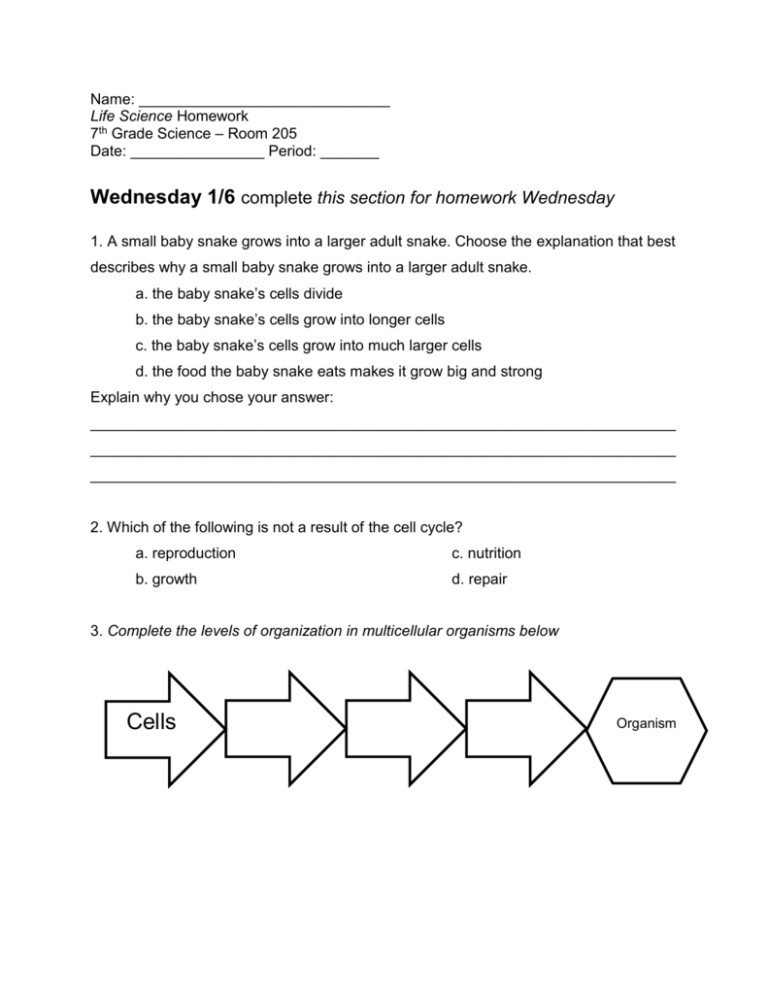
Name: ______________________________ Life Science Homework 7th Grade Science – Room 205 Date: ________________ Period: _______ Wednesday 1/6 complete this section for homework Wednesday 1. A small baby snake grows into a larger adult snake. Choose the explanation that best describes why a small baby snake grows into a larger adult snake. a. the baby snake’s cells divide b. the baby snake’s cells grow into longer cells c. the baby snake’s cells grow into much larger cells d. the food the baby snake eats makes it grow big and strong Explain why you chose your answer: ______________________________________________________________________ ______________________________________________________________________ ______________________________________________________________________ 2. Which of the following is not a result of the cell cycle? a. reproduction c. nutrition b. growth d. repair 3. Complete the levels of organization in multicellular organisms below Cells Organism Thursday 1/7 complete this section for homework Thursday night 1. How do we define sexual reproduction in science? ___________________________ ______________________________________________________________________ ______________________________________________________________________ 2. How many chromosomes are in a human: diploid cell? _____________________ haploid cell? _____________________ 3. What are the advantages of sexual reproduction? ____________________________ ______________________________________________________________________ Monday 1/11 complete this section for homework Monday night 1. What is a major difference between sexual and asexual reproduction? (Think about where the genetic material comes from) ______________________________________ ______________________________________________________________________ ______________________________________________________________________ 2. What are disadvantages to asexual reproduction? ______________________________________________________________________ ______________________________________________________________________ 3. What are the advantages of asexual reproduction? ______________________________________________________________________ ______________________________________________________________________ Tuesday 1/12 complete this section for homework Tuesday night 1. If someone’s alleles for eye color are represented as: bb then they are… a. heterozygous c. homozygous dominant b. heterozygous d. homozygous recessive 2. Complete the Punnett Square Below: What is the probability that the offspring will be homozygous recessive (tt)? a. 50% b. 75% c. 25% 3. A child has blue eyes, but both of the child’s parents have brown eyes. Create a Punnett Square below that explains how this is possible. (remember that B represents brown eye allele, b represents blue eye allele) Write a sentence to explain the Punnett Square you created, how could the blue eyed child be born to two brown eyed parents. ______________________________________________________________________ ______________________________________________________________________ 4. ___________ is the passing of traits from parents to offspring. Thursday 1/14 complete this section for homework Thursday night 1. What type of relationship do a dog and a flea have? Explain ______________________________________________________________________ ______________________________________________________________________ 2. How does a commensal relationship affect the organisms involved? ______________________________________________________________________ ______________________________________________________________________ 3. What type of a relationship do bees and flowers have? Explain. ______________________________________________________________________ ______________________________________________________________________ 4. What is an abiotic factor? Give two examples. ______________________________________________________________________ ______________________________________________________________________ 5. Scientists classify organisms by… _______________________________________ ______________________________________________________________________ 6. Where does almost all energy on Earth come from? __________________________
